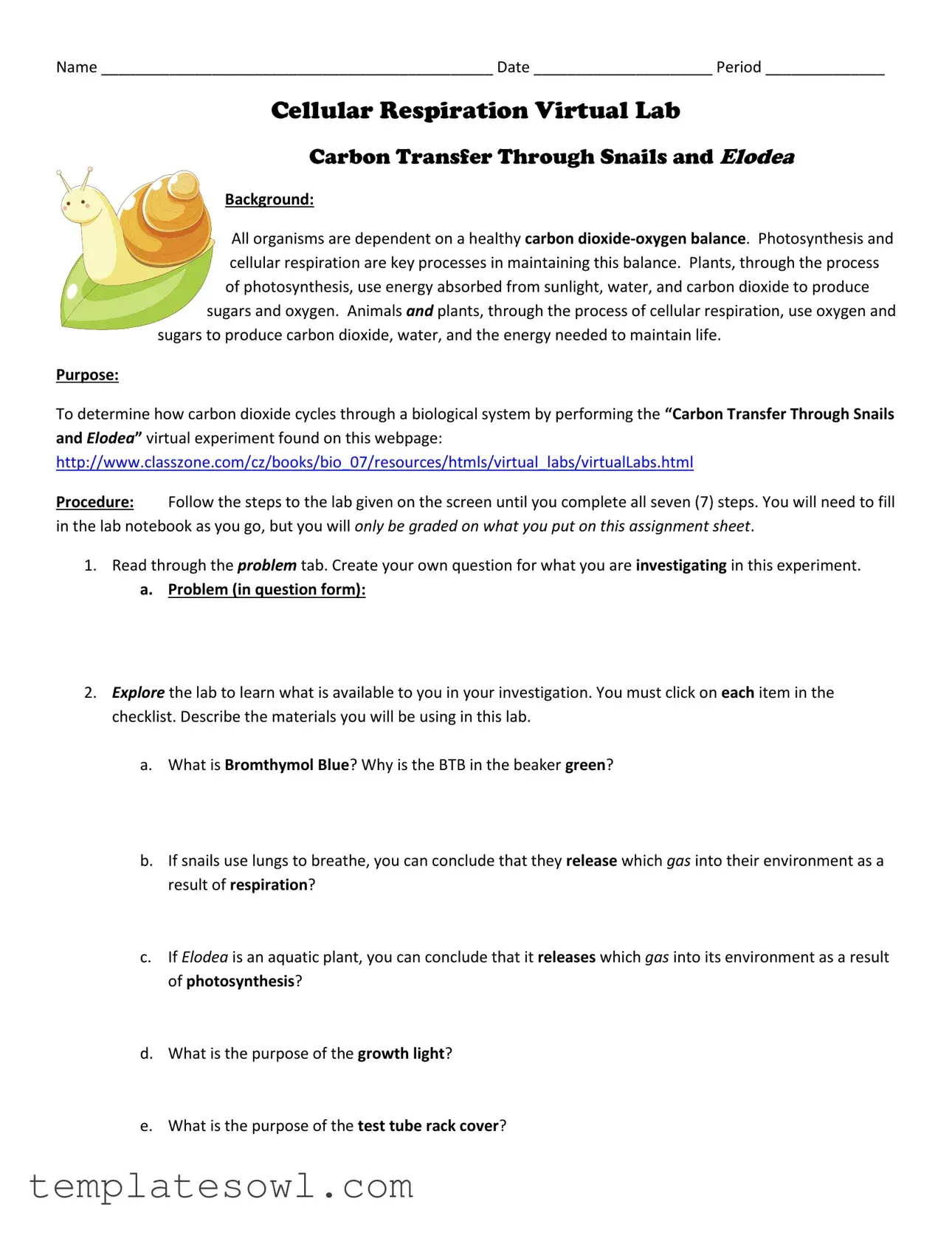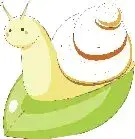What is the purpose of the Cellular Respiration Virtual Lab?
The purpose of the Cellular Respiration Virtual Lab is to explore how carbon dioxide cycles through a biological system, specifically in relation to snails and Elodea plants. By performing the experiment, students can gain a better understanding of the role of photosynthesis and cellular respiration as they interact with each other in maintaining a balanced ecosystem.
What materials are used in this virtual lab?
The virtual lab includes materials such as bromthymol blue (BTB), test tubes, snails, Elodea plants, and a growth light. Bromthymol blue is a pH indicator that changes color based on carbon dioxide concentrations. The test tubes serve to demonstrate the various conditions being tested, including different combinations of snails and Elodea.
How should I set up the experiment?
To set up the experiment, it is crucial to follow the provided procedure carefully. Begin by reading the problem tab to formulate your research question. Next, explore the available materials by clicking through the checklist. You will then create hypotheses, establish your independent and dependent variables, and fill the test tubes according to the instructions. Be sure to document your findings accurately in your lab notebook.
What is the role of bromthymol blue in the experiment?
Bromthymol blue serves as an important indicator in the experiment. It helps visualize the level of carbon dioxide present in the test tubes. The color of the solution indicates CO2 concentration: it is green when CO2 levels are low, yellow when CO2 levels are high, and blue in the absence of CO2. This change in color allows for easy observation of how the presence of snails and Elodea affects carbon dioxide levels in the water.
What conclusions can be drawn about the relationship between snails and Elodea?
The relationship between snails and Elodea can be interpreted in several ways. Commonly, it is observed that snails consume oxygen and release carbon dioxide, while Elodea photosynthesizes and consumes carbon dioxide, releasing oxygen. This symbiotic relationship indicates a balance where each organism contributes positively to the other’s survival in an aquarium environment.
Why is a control setup important in this experiment?
A control setup is crucial as it establishes a baseline for comparison. The control test tube, which contains no snails or Elodea, allows students to measure changes in the experiment that are specifically due to the presence of these organisms. If the color of the control changes, it suggests external factors may be influencing the results, necessitating further investigation.
How does this experiment demonstrate the cycling of carbon dioxide in an aquarium?
This experiment illustrates the cycling of carbon dioxide through the interactions between snails and Elodea. When snails respire, they release carbon dioxide into the water. Conversely, Elodea takes in carbon dioxide for photosynthesis, producing oxygen. By examining the color changes in BTB, participants can observe the direct impact of both organisms on the carbon cycle.
What observations indicate which gas the snails release?
When observing the experiment, if the BTB color changes to yellow in the test tubes containing snails, it indicates an increase in carbon dioxide levels. This observation supports the inference that snails release carbon dioxide as a result of cellular respiration. In contrast, if Elodea is present, the ability to photosynthesize may mitigate the accumulation of CO2 in the water.
Why should Elodea be added to a snail aquarium?
Adding Elodea to a snail aquarium is essential for maintaining a healthy ecological balance. Elodea helps regulate carbon dioxide levels through photosynthesis, which in turn produces oxygen needed by snails. This interaction ensures a sustainable environment for both organisms, preventing excess CO2 from building up and maintaining a healthier aquarium ecosystem.



